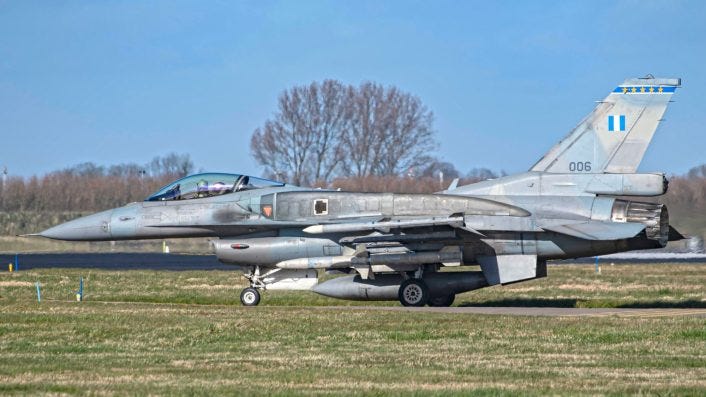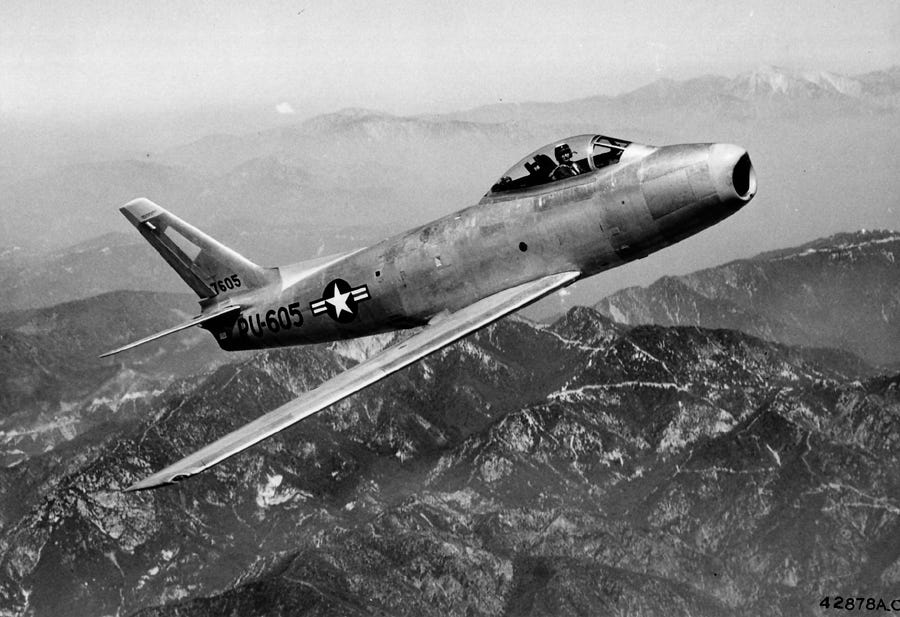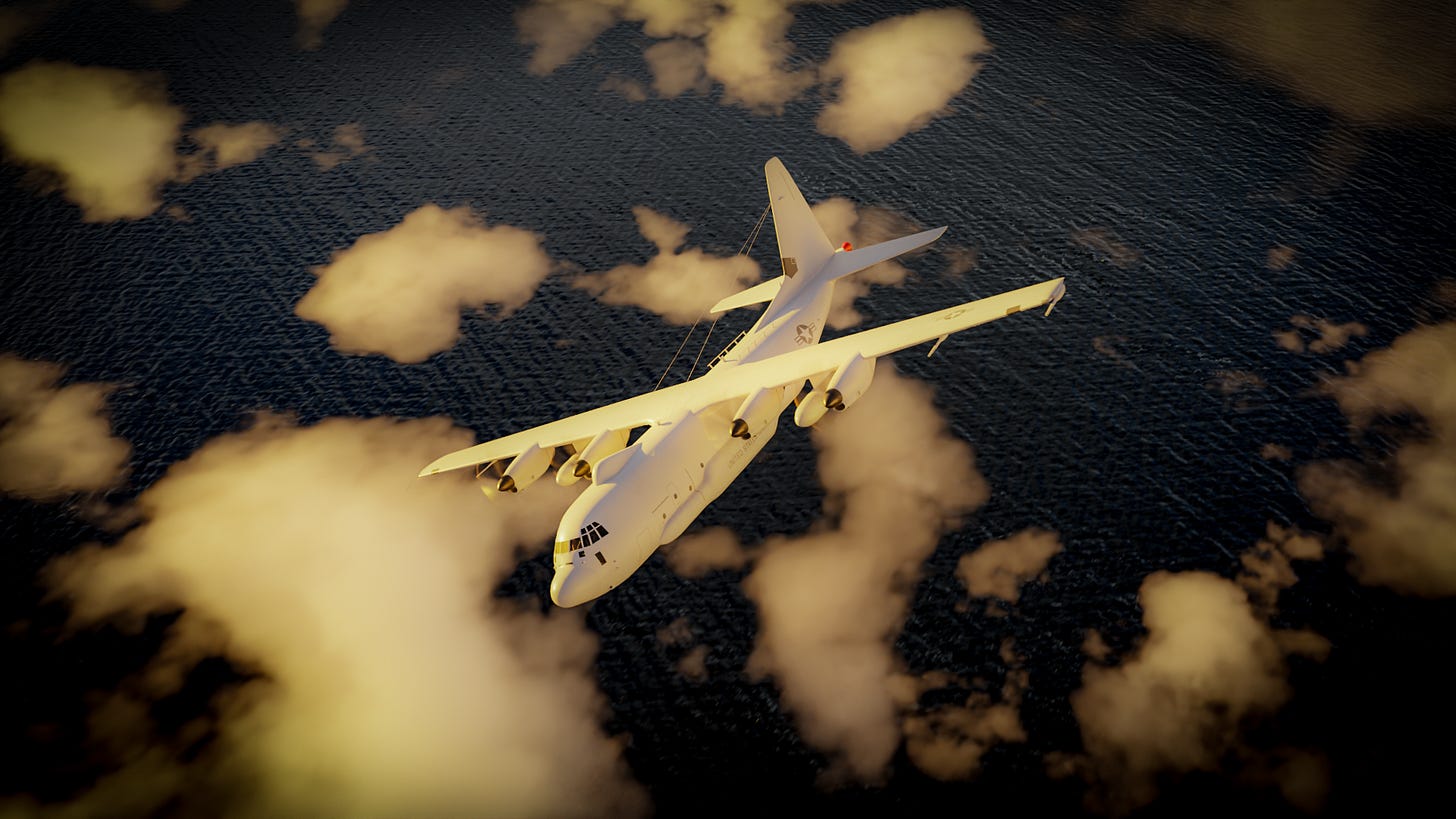From Sabre to Stealth: Greece Rethinks Its Airpower Edge
As stalled F-16 upgrades push Athens toward more F-35s, we look back to 1948 when the F-86 Sabre proved speed and innovation could change the balance of the skies.
“Air superiority is not just about numbers—it’s about having the edge when it matters most.”
— Gen. Hoyt S. Vandenberg, USAF Chief of Staff (1948 announcement of Johnson’s F-86 record)
Mission Briefing
Greece Weighs More F-35s as F-16 Upgrade Talks Stall
For five years, Greece has been locked in drawn-out negotiations with Lockheed Martin over the modernization of its 38 F-16C/D Block 50 fighters. Now, with little progress and mounting concerns that any eventual upgrade would still leave the jets lagging behind their peers, Athens is rethinking its options.
Reports from Greek outlets suggest the Hellenic Air Force may instead pursue additional F-35A Lightning IIs, beyond the 20 already on order in a $3.5 billion deal signed in 2024. Those aircraft are scheduled to arrive beginning in 2030, with an option for 20 more already on the table.
The crux of the issue lies in timing and effectiveness. Even if the Block 50 upgrade goes forward, it may not be complete until 2031 or later—and the result would be a configuration still short of the cutting-edge F-16V Viper Block 72 standard. Meanwhile, Greece’s 83–84 Block 52 and Block 52+ Advanced fighters are being brought up to the Viper standard, with 40 aircraft already delivered and all upgrades slated for completion by 2027. Equipped with APG-83 AESA radars, new mission computers, and advanced avionics, these jets represent some of the most capable F-16s in Europe.
The proposed Block 50 program would use systems stripped from the Block 52 fleet during their Viper conversions, bringing the older airframes closer in line with newer models. But with costs trimmed to under $1 billion—and questions about future service life extensions—many in Athens doubt the return on investment. As one report put it, F-35s would deliver greater longevity, interoperability, and combat potential for decades to come.
Meanwhile, infrastructure work to prepare for the F-35 is already underway. Andravida Air Base is undergoing a €300 million NATO-standard overhaul, while Greek pilots and technicians are embedded with the Joint Program Office in Virginia for training.
For now, the fate of the Block 50s remains uncertain. Some sources insist negotiations are in their final stages, while others believe Greece is leaning hard toward simply expanding its F-35 buy. With regional tensions high and Turkish F-16s often squaring off against Hellenic jets in the Aegean, the decision will shape the future balance of airpower in the region.
This Week in Aviation History
September 15, 1948 – The Sabre Claims the Speed Crown
The California desert was calm that September morning in 1948. Over the dry lakebed at Muroc Air Force Base, Major Richard L. Johnson dropped his F-86 Sabre to less than 150 feet and streaked across the timing course. Four passes later, the numbers were in: 670.98 miles per hour—fast enough to shatter the world speed record.
What made the feat so significant wasn’t just the number. This wasn’t a one-off research aircraft stripped down for the task. It was a fully armed, off-the-line fighter jet. The Associated Press called it “the first world speed mark in history for a production model aircraft ready to fight.” The Sabre, America’s new swept-wing jet, had just proven it was more than a promise on paper.
Johnson’s road to that triumph was anything but smooth. Just ten days earlier at the National Air Races in Cleveland, his attempt had been spoiled by faulty timing gear—and nearly ended in disaster when a civilian plane blundered onto the course, forcing him to dive beneath it with only feet to spare. But at Muroc, everything aligned: steady air, a perfectly tuned J47 engine, and a pilot determined to etch his name into the record books. For his effort, Johnson received the prestigious De la Vaulx Medal.
The F-86 Sabre was the cutting edge of its era, with 35-degree swept wings, blistering turbojet thrust, and six hard-hitting .50-caliber machine guns. North American Aviation boasted that any Sabre off the assembly line could match the record—and for years, none could prove them wrong. Not until 1952 did another Sabre variant finally surpass Johnson’s mark.
As for Johnson himself, the record was only one chapter in a remarkable career. A decorated P-47 pilot in World War II, he became one of the Air Force’s premier test pilots and later made the first flights of icons like the F-102 Delta Dagger, F-106 Delta Dart, and F-111 Aardvark. He retired as General Dynamics’ Director of Flight and Quality Assurance, and in 1998 was honored on the Aerospace Walk of Honor in Lancaster, California.
When Richard L. Johnson passed away in 2002, he left behind a legacy not only of speed, but of courage, precision, and a lifelong devotion to flight. And on that September day in 1948, the Sabre—America’s first great jet fighter—showed the world exactly what it could do.
Aircraft Spotlight: The North American F-86 Sabre
The F-86 Sabre was America’s first true jet fighter, and the aircraft that gave the U.S. a decisive edge in the early Cold War skies.
Design and Performance
Wings: 35° swept leading edges with automatic slats for better lift at low speeds
Powerplant: General Electric J47 turbojet, producing up to 6,000 pounds of thrust with water injection
Speed: 679 mph (1,093 km/h) at sea level
Ceiling: 48,000 feet (14,630 meters)
Range: About 1,200 miles (1,930 km)
Climb: To 40,000 feet in just over 10 minutes
Firepower
Six nose-mounted .50-caliber Browning AN-M3 machine guns, firing a combined 7,200 rounds per minute
Capable of carrying bombs or unguided rockets for ground attack missions
Combat Record
The Sabre’s reputation was forged in the Korean War, where it went head-to-head against the Soviet-built MiG-15. U.S. pilots claimed an impressive kill ratio, and the Sabre became a symbol of American airpower in the jet age.
Legacy
Beyond the U.S., Canadair and other partners built license versions, ensuring the Sabre flew with dozens of air forces around the world well into the 1960s. For many nations, it was their first taste of supersonic-capable jet combat.
Why It Matters
The F-86 wasn’t just fast—it was revolutionary. Its combination of speed, firepower, and agility defined the blueprint for fighters that followed. Johnson’s 1948 record run wasn’t a stunt—it was a proof of concept that America’s new jet fighter could dominate the skies.
In Case You Missed It
All about the little known TACAMO Mission:
Photo Outlet
Every issue of Hangar Flying with Tog gets you a free image that I’ve taken at airshows:
Feel free to use these photos however you like, if you choose to tag me, I am @pilotphotog on all social platforms. Thanks!
Final Approach
I don’t usually step outside aviation in this space, but I can’t ignore the shooting of Charlie Kirk. It hit me hard. No matter where you stand politically, seeing someone shot in cold blood is jarring. It shakes you, makes you think about how fragile life really is. Charlie lived his life by virtue, and I will never forget where I was when I heard the news. I don’ think the world will ever be the same.
When I sat down to write this week’s issue, I kept coming back to it. Aviation is about risk, yes, but it’s also about discipline, respect, and responsibility. What we saw in that shooting was the opposite of all of that—recklessness, hatred, and disregard for life.
I don’t have a neat conclusion here. Just a reminder, mostly to myself and hopefully to you, to value every day, to be deliberate with words and actions, and to not take this time we’re given for granted.
Fly safe,
—Tog
Post Flight Debrief
Like what you’re reading? Stay in the loop by signing up below—it’s quick, easy, and always free.
This newsletter will always be free for everyone, but if you want to go further, support the mission, and unlock bonus content, consider becoming a paid subscriber.
Your support keeps this flight crew flying—and I couldn’t do it without you.
– Tog








Thank you for your comments about the brutal murder of such an inspiring young man. I wonder if the assassin knows that his act was an attack on the entire country. I lived through the 1960s, and to me, he is no different from Lee Harvey Oswald, James Earl Ray, and Sirhan Sirhan. The politics of their victims may have been different, but in each case we were robbed of a true American patriot.